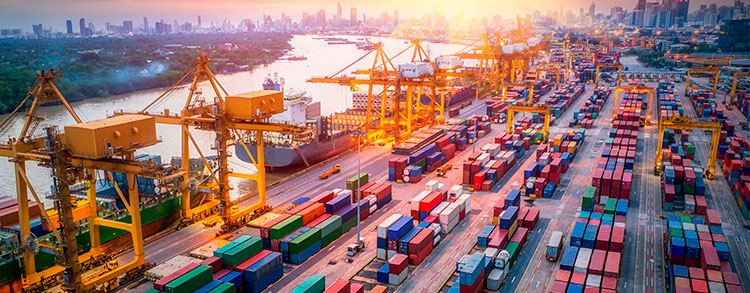Canadian port assists in expanding trade between the two countries and diversifying product lines
By Sérgio Siscaro
With a US$ 5.6 billion foreign trade flow in 2018, the increase in business between Brazil and Canada has been a great opportunity for companies in both countries to diversify their markets. The relationship follows a rise in expansion, with 25% growth in export and import operations last year, compared to 2017. At the base of the whole movement, the logistics structure deserves attention as it allows the flow of so many transactions, with impact on ports. Saint John, on the east coast of Canada, has been actively involved in this process.
“The advances we see today in terms of trade between the two countries signal the opportunities we will see in the future. Once our governments are attentive to the possibilities for trade, more companies will follow this trend,” says Port of Saint John Cargo Development manager Shannon Blanchard. “We have noticed in our work that several industries in Brazil are placing Canada as an interesting market for their exports,” she adds, noting that the transit time between Santos and Saint John ports is approximately 30 days.
Blanchard knows what she’s talking about. The increase in business and the expectations of even greater future expansion have definitively placed Brazil on the route of her activities. She makes frequent trips to the country for events and business meetings, with very positive feedback. “Only in the last 18 months, I’ve been in Brazil four times, and I was really happy with what I saw. Clearly there is an opening for business opportunities and I am very optimistic about this exchange. “
According to the executive, Canada offers numerous opportunities and proximity that are increasingly being perceived in the Brazilian market and vice versa, and the port of Saint John has a tradition in these businesses, since it has been used as a trade route between the two countries for 10 years.
According to Blanchard, bilateral trade has been based on agricultural and forestry products (from Canada to Brazil) and items such as sugar, coffee and food in general (from Brazil to Canada). “But we have seen more niche products coming from Brazil, such as specialty coffees,” she says. “We believe in new opportunities emerging between the two countries. We are optimistic as to the growth of these numbers, both ways – including with more Brazilian companies coming to Canada to explore the opportunities”, she adds.
The progress of negotiations for a free trade agreement to be signed between Canada and the Mercosur countries is on the port radar, as it may considerably intensify imports and exports between Canada and Brazil. The treaty could contribute to diversify the range of products traded, predominantly represented by mineral and agricultural commodities, and include goods of greater value added, both Brazilian and Canadian.
Located in the southern part of the province of New Brunswick, the port of Saint John has been used as a hub for Brazilian products destined for Canada and, conversely, for companies that export goods to Brazil. It is served by routes from CMA CGM and MSC, which connect it to several points in the Americas, including the port of Santos. In addition, it has DP World facilities, one of the largest containerized cargo operators in the world, and offers access to both the domestic market of Canada and the United States, as it is close to the border between the two countries.





